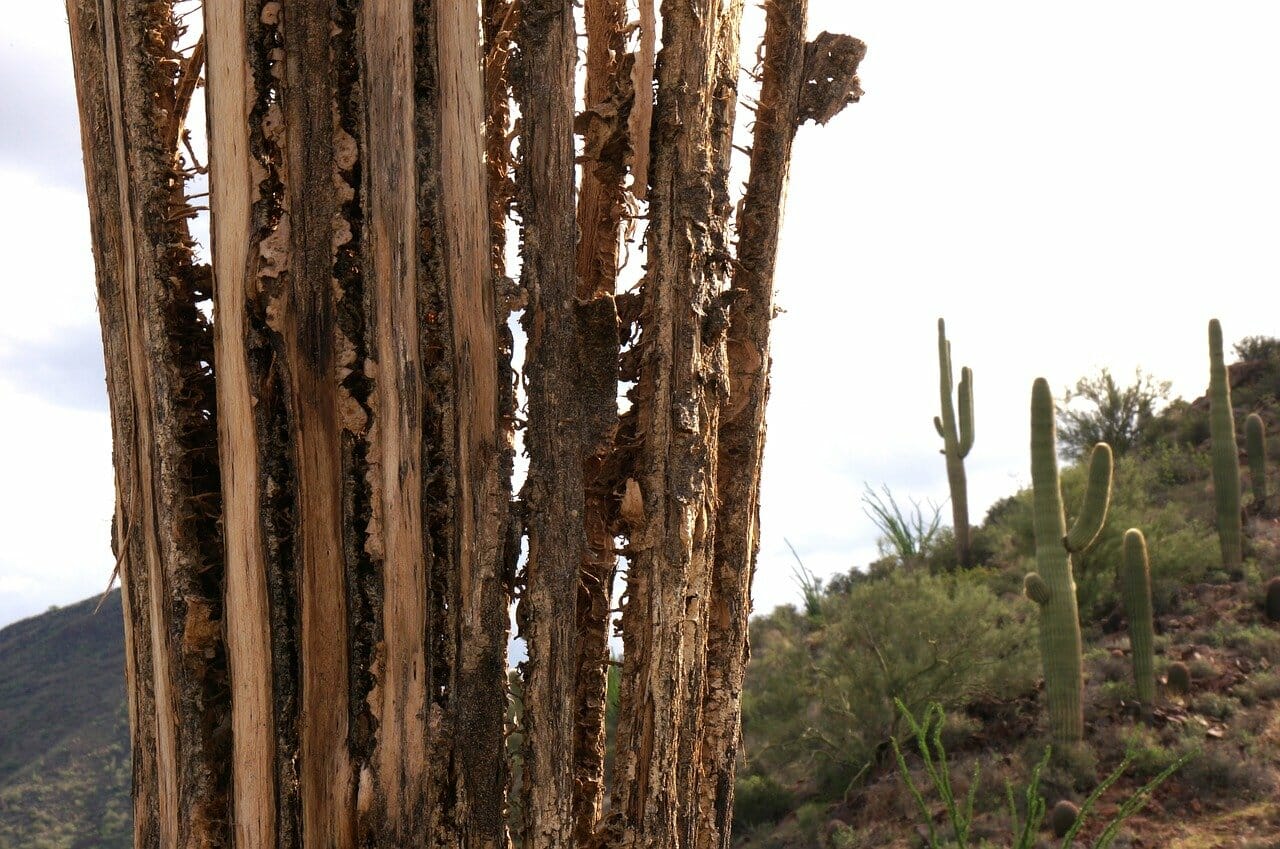Arizona’s beloved plant species, the giant green saguaro, has had a difficult time surviving the extreme weather in Arizona.
Record-breaking heat has placed this desert plant under great stress, and many have tumbled over or lost limbs this past year.
“Certainly. the dryness of the last decades and last year’s record lack of rainfall put many saguaros in a compromised state,” said Martin Wojciechowski, a botanist, microbiologist and plant biology professor at Arizona State University.
A lack of rainfall in 2020 and record-breaking heat, according to the National Weather Service, have led to older saguaros dying off.
A weakened and dehydrated older saguaro, which can weigh between 3,200 and 4,800 pounds, according to Arizona Sonora Desert Museum, may not have the strength in its stem to remain upright causing it to fall over, Wojciechowski said.
READ ALSO: 15 must-see places for an Arizona road trip
“The desert is a demanding environment and water is the key to survival here whether its humans, packrats or saguaros,” Wojciechowski said.
Even though this past year the Sonoran Desert has seen significant amounts of rain, the rain came much too late for some of the older and more comprised saguaros, he said.
By the end of the monsoon season in Arizona, the National Oceanic and Atmospheric Administration ranked this monsoon as the seventh-wettest in the state since 1901. It still wasn’t enough to keep the older cacti afloat, said Benjamin T. Wilder, director of the University of Arizona’s Desert Laboratory on Tumamoc Hill, where botanists began studying the saguaro 118 years ago.
“These older plants which are potentially at the end of their life span are disproportionally dying in a very short time frame,” Wilder said.
After years of extreme heat in Arizona, some of the saguaros also couldn’t handle the sudden amount of rain and it became a different kind of a shock to their system, Wilder said.
“With this amount of rain, we were having, they just sucked up so much water and were put under a lot of stress,” he said.
Even though the saguaro is built to store large amounts of water at a time, their roots which grow more horizontally into the ground make it harder for them to access water that may be stored deeper in the soil during the hot summer months, said Kevin Hultine a plant physiologist and ecophysiologist for Phoenix’s Desert Botanical Garden.
“The heat is really hard on the photosynthetic tissues of a plant,” Hultine said. “It might not be able to conduct the photosynthesis that they typically might that allows them to produce the resources that they need to maintain metabolic function.”
The effects of climate change are being felt by the saguaro species even in the dry climate they were built to survive in causing their mechanisms of survival to suffer.
For Arizona residents who are worried about their saguaro, Hultine recommends keeping a close watch on the plant particularly its ribs and stem size.
The stem can shrink and swell over time and if you pay close attention water makes the ribs of the cactus swell up, Hultine said.
According to a study conducted by the University of Arizona’s college of agriculture and life sciences, “if you can not get one or two fingers between the ribs or if the skin gives way when you press it, the cactus needs water.”
Wilder also recommended keeping the natural vegetation around the saguaro or else it won’t survive as well.
“Younger saguaros are helped by the nurse tree, which is the overarching tree such as a palo verde or an ironwood, and they create a little micro-climate and shade for the saguaro,” Wilder said.




